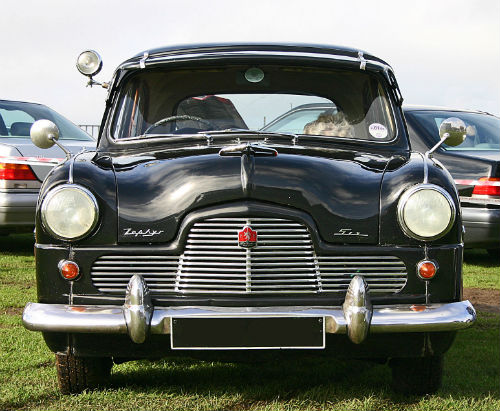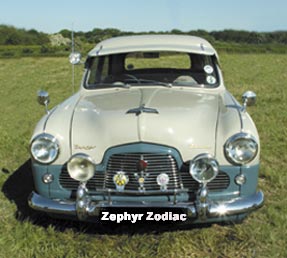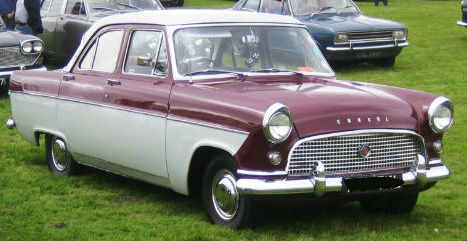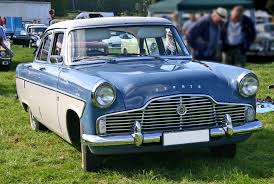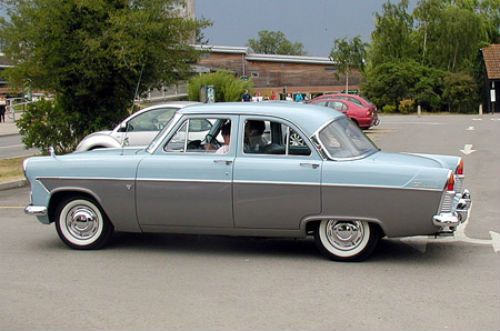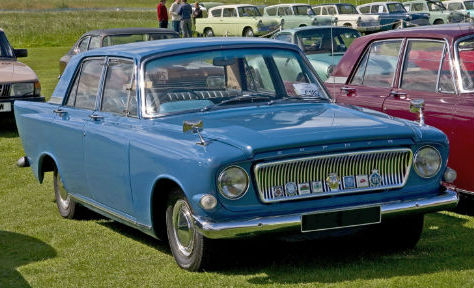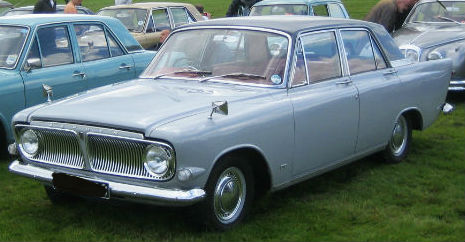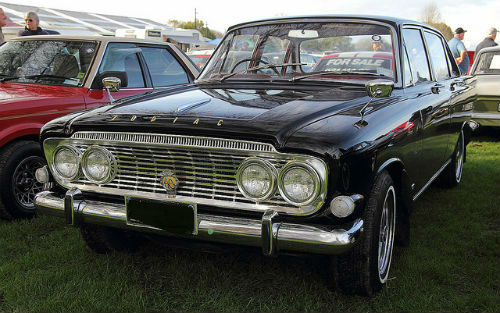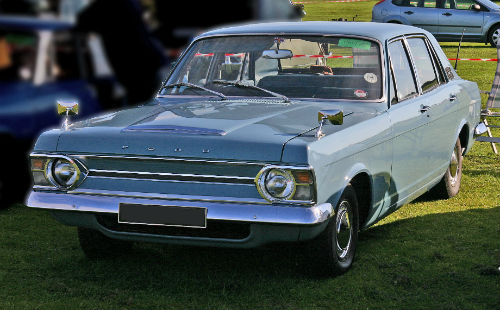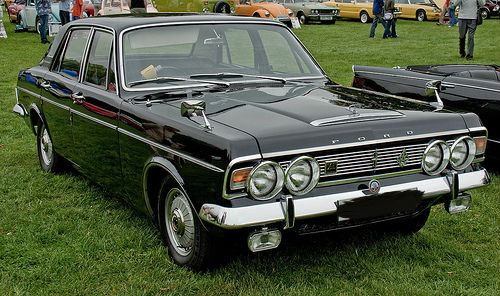| ZEPHYR ZODIAC CLUB HAMILTON INC
| 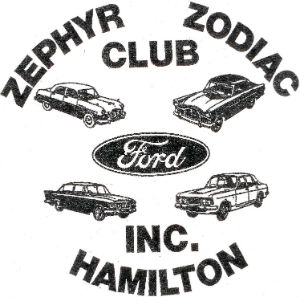 |
|
|
TECHNICAL INFORMATION
The information below has been sourced from Wikipedia, for more information go to http://en.wikipedia.org/wiki/Ford_Zephyr#New_Zealand_assembly
The Ford Zephyr was a car manufactured by the Ford Motor Company in the United Kingdom. Between 1950 and 1972, it was sold as a more powerful six-cylinder saloon to complement the four-cylinder Ford Consul: from 1962 the Zephyr itself was offered in both four- and six-cylinder versions. The Zephyr and its luxury variant, the Zephyr Zodiac which appeared in 1955, were the largest passenger cars in the British Ford range from 1950 till they were replaced in 1971 by a larger Ford Consul and Granada. History The Mark I Ford Consul and Zephyr models were first displayed at the Earl's Court motor show in 1950. They were the first to use in mass production the MacPherson Strut independent front suspension which is still widely used today. Production began with the Consul on January 1, 1951. The Mark I model ran until 1956. From April 1956 the Mark II Consul, Zephyr and Zodiac went on sale and were known as the Three Graces. The Mark II range was a big seller and finished its run in 1962 when from April that year the Mark III Zephyr 4, Zephyr 6 and Zodiac went on sale; the Consul name was dropped, the car's place in the Ford UK line-up being filled by the first four-cylinder Ford Zephyr. While the Mark II Zephyr and Zodiacs had shared the same body (the Consul had shorter front guards and bulkhead), the new Zodiac and Zephyrs launched in 1962 shared few body panels. With the Mark III, Ford finally sorted out problems that had beset previous models (Mark I axles and Mark II gearboxes were particular weaknesses) and the Mark III proved to be the most popular and durable of the range (it is said that possibly no other UK-based car had undergone as much pre-production testing). The model sold at a rate equal to or better than the Mark II both in the UK and overseas, but was in production for a shorter time. During the last months of production, an up-market Executive version was added to the Mark III range, and examples of these are today highly sought after. The Mk III range was discontinued in January 1966 (many believe prematurely given the cars' success) and the completely new Zephyr / Zodiac Mark IV range was released in April 1966. This car was somewhat ahead of its time with a design that anticipated the later Consul/Granada range with V-engines and independent rear suspension, but the research and development of the model was very rushed and this unfortunately reflected in its durability. Although the Ford Zephyr never saw American production,
cars were imported into the US and the name itself has appeared on other American
Ford-related cars: the Mercury Zephyr was an upscale version of the Ford Fairmont,
and the Lincoln Zephyr began its second production run in 2006 (the first was
from 1936 to 1942).Zephyr Six (or Zephyr Mark I)
New Zealand assembly The Consul and Zephyr were assembled at Ford New Zealand's Seaview factory in Lower Hutt from CKD kits. The large Fords competed with the also locally built Vauxhall Wyvern and Velox and, later the Australian Holden. When the newly crowned Queen Elizabeth II visited New Zealand as part of a Commonwealth tour in the early 1950s, she was pictured watching Zephyrs being built at the local Ford plant. New Zealand assembly of the Mark II, also from CKD kits, now included the Zodiac. The big Fords from England were now offered alongside the Australian-sourced Ford Falcon and also competed with the Vauxhall Victor and Velox, Holden, and Australia's Chrysler Valiant. Supplies were restricted due to strict import licensing and demand always exceeded availability; it was not uncommon for buyers to wait two to three years for their new big Ford. Ford New Zealand built the Zephyr 4 and 6 as well as the Zodiac locally from CKD kits, offering only the bench front seat option finished in vinyl. Automatic transmission, introduced late in the life of the Mk II, was again available but was a rare factory option as most buyers chose manual. As well as the 'Zephyr 6', Ford NZ built a six-cylinder 'Zephyr Special' with a lower equipment level and deletion of the boot lid trim strip and other exterior brightwork which was sold to fleet operators such as the government. The big Fords were unusual in having four-speed manual gearboxes when rivals, including Ford's own Falcon, had only three speeds. Building the top luxury Zodiac model locally again also gave Ford a supply advantage over key rivals such as Vauxhall whose upmarket Cresta was only ever sold fully imported and much harder to obtain than the locally assembled Velox. In November 1966 the manufacturers announced a plan to introduce an "export special" version of the Zephyr Mk IV combining the 3-litre engine of the Zodiac with other specifications largely following those of the existing Zephyr. This 3-litre Zephyr was not offered by Ford on the domestic (UK) market. This three-litre model was quickly adopted by Ford New Zealand which had originally launched the Mk IV Zephyr assembled locally from CKD kits with the 2.5-litre V6 (no Zephyr 4 this time) and received complaints it was underpowered for a country where towing boats and caravans was common. Ford New Zealand also introduced optional floor shift and bucket seats as an alternative to the standard column shift and bench front seat and a large number of Zephyrs were built in this form, with other modifications, for New Zealand's traffic police. The Zodiac was also again assembled in
New Zealand with both bench and bucket front seats. Automatic transmission was
optional with both the Zephyr and Zodiac. The local Mark IV line did not include
the Zephyr Deluxe version available in the UK, was not as popular as the Mark
III and was outsold by the now much wider locally built Australian Falcon range.
Production ended in 1972 and the Consul and Granada replacements introduced in
the UK were never officially imported into New Zealand.
Model number EOTA The first of the Zephyr range was a lengthened version of the four-cylinder 1,508 cc (92 cu in) Consul, with a 2,262 cc (138 cu in) six-cylinder engine producing 68 bhp (51 kW). It had MacPherson Strut independent front suspension and a live axle with half elliptic springs at the rear. The car could reach just over 80 mph (130 km/h) and 23 mpg. The Ford Zephyr Six was available with 4-door saloon, estate and 2-door convertible bodies. The convertible version was made by Carbodies and had a power-operated hood; the estate car was by Abbotts of Farnham and was sold as the Farnham. The car was a success not only in the market place but also in competition. In 1953 a Ford Zephyr Six driven by Maurice Gatsonides won the Monte Carlo rally, pushing a Jaguar Mark VII into second place in the process. Two years later a Ford Zephyr Six driven by Vic Preston with D P Marwaha achieved an outright win in the East African Safari Rally[3]. A saloon tested by The Motor magazine in 1951 had a top speed of 79.8 mph (128.4 km/h) and could accelerate from 0-60 mph (97 km/h) in just 20.2 seconds. A fuel consumption of 23.7 miles per imperial gallon (11.9 L/100 km; 19.7 mpg-US) was recorded. The test car cost £842 including taxes but was fitted with optional leather trim, heater and radio (the basic car cost £842).
Model number EOTTA The Zephyr Zodiac (or Zodiac Mark I) was an upmarket version of the Zephyr launched at the London Motor Show in autumn 1953. It had two-tone paintwork, leather trim, a heater, windscreen washers, whitewall tyres and spot lights, etc. The engine had a higher compression ratio - 7.5:1 instead of 6.8:1 - increasing the maximum power to 71 bhp (53 kW). A car tested by The Motor magazine in 1955 had a top speed of 80 mph (130 km/h) and could accelerate from 0-60 mph (97 km/h) in 20.2 seconds. A fuel consumption of 22.2 miles per imperial gallon (12.7 L/100 km; 18.5 mpg-US) was recorded. The test car cost £851 including taxes. There are no official records of Zephyr Zodiac convertibles being produced but there were a few estate cars.
Model number 206E In 1956 the Consul, Zephyr and Zodiac were all restyled to a new family look. The 6-cylinder cars' engines were enlarged to 2,553 cc (156 cu in), with power output correspondingly raised to 86 bhp (64 kW)[5]. The wheelbase was increased by 3 inches (76 mm) to 107 inches (2,700 mm) and the width increased to 69 inches (1,800 mm). The weight distribution and turning circle were also improved. Top speed increased to 88 mph (142 km/h) and the fuel consumption was also improved at 28 mpg-imp (10 L/100 km; 23 mpg-US). The Zodiac and Zephyr were also offered in two body styles these being the "Highline" and "Lowline", depending on the year of manufacture — the difference being 1.75 in (44 mm) being cut from the height of the roof panel. The "Highline" variant featured a hemispherical instrument cluster, whereas the "Lowline" had a more rectangular panel. In Australia, the Mark II Consul, Zephyr and Zodiac were built at Ford's factory in Geelong. As well as a 3-speed manual gearbox there was an optional overdrive and from 1956 (1959 in Australia) a Borg Warner DG automatic transmission. At first drum brakes were fitted all round (with a larger lining area of 147 sq in/950 cm2) but front discs became optional in 1960 and standard from mid 1961 (in Australia only 4-wheel drum brakes were available; some dealers fitted servo-assistance from 1961). A two-door convertible version was offered with power-operated hood. Owing to the structural weaknesses inherent in the construction of convertibles very few convertibles are known to survive: probably only 20-25 examples. In Australia utility (pick-up) and station wagon (estate) versions built in local factories were sold. A convertible with overdrive tested by The Motor magazine in 1961 had a top speed of 88.3 mph (142.1 km/h) and could accelerate from 0-60 mph (97 km/h) in 17.0 seconds. A fuel consumption of 24.5 miles per imperial gallon (11.5 L/100 km; 20.4 mpg-US) was recorded. The test car cost £1193 including taxes. In Australia, poor sales of the Zephyr led to cancellation of local manufacturing, which was switched in 1960 to production of the US-designed Falcon.
Model number 206E The Mark II Zodiac was slightly altered to distinguish it from the lesser variants, having more elaborate tail-end styling and at the front a different grille. The auxiliary lamps and wing mirrors were deleted from the Zodiac range but it retained two-tone paint, whitewall tyres, chrome wheel-trim embellishers and gold plated badges. A car tested by the British magazine The Motor in 1956 had a top speed of 87.9 mph (141.5 km/h) and could accelerate from 0-60 mph (97 km/h) in 17.1 seconds. A fuel consumption of 21.5 miles per imperial gallon (13.1 L/100 km; 17.9 mpg-US) was recorded. The test car cost £968 including taxes.
Model 211E Rather than call the smaller-engined model the Consul as before, Ford UK called it a Zephyr 4 — the 4 to indicate that it had the four cylinder 1,703 cc (104 cu in) engine from old Consul. A four-speed manual gearbox, now with synchromesh on all ratios, was standard, with overdrive or automatic transmission available as options.
Model numbers 213E, 214E (right-hand drive and left-hand drive) The Zephyr / Zodiac Mark III shared some of its mechanical components, as well as the basic chassis design, with the Mark II, but had a stronger overall body construction. The exterior was designed by Canadian Roy Brown who also designed the Edsel and the Cortina, though the rear of the body was inspired by a design proposal by Frua. Unlike the Zephyr 4, the Zephyr 6 had a full width grille including the headlight surrounds: overall body length and width were the same for both Zephyr III versions, however. With the same 2,553 cc (156 cu in) displacement as before, the Mark III model had higher compression ratio resulting in some 20 hp (15 kW) higher output as well as a broader torque range.
Only saloons and estate cars were made, the estate being a conversion by Abbotts of Farnham.
Model numbers 213E, 214E The Zodiac was an upmarket version of the Zephyr 6, but differed considerably from that model by the limousine-type rear doors, sharper roofline and tail, unique grille (four headlights instead of two), exclusive bumper bars, plusher seating, and up-market upholstery, dashboard and interior fittings. A choice of individual or bench front seat was available trimmed in leather or cloth. The front doors and bonnet panels were shared with the Zephyr 6. The Executive version had extra luxury fittings again. The 2553 cc single carburettor six cylinder engine was improved internally to increase the power output to 109 bhp and a new four speed all synchromesh transmission with column change was fitted. The brakes, servo assisted, use discs at the front and drum at the rear. A Mk III saloon tested by the British The Motor magazine in 1962 had a top speed of 100.7 mph (162.1 km/h) and could accelerate from 0-60 mph (97 km/h) in 13.4 seconds. A touring fuel consumption of 22.6 miles per imperial gallon (12.5 L/100 km; 18.8 mpg-US) was recorded. The test car cost £1070 including taxes on the UK market.
Models 3008 / 3010E A completely new and larger body was made for the Mk IV range, launched not at an October motorshow, but in the Spring of 1966. The suspension was now independent all round using coil springs. Disc brakes, servo-assisted, were used on all wheels. The engines were new and of V format, the 4 having a 1,996 cc (122 cu in) V4 and the 6 a 2,495 cc (152 cu in) V6 unit. In November 1966 the manufacturers announced a plan to introduce an "export special" version of the Zephyr Mk IV combining the 3-litre engine of the Zodiac with other specifications largely following those of the existing Zephyr. This 3-litre Zephyr would not be offered by Ford on the domestic (UK) market. Criticism of the handling of early examples led to the fitting as standard of radial-ply tyres on the larger engined version in place of the more conventional (in the UK at that time) cross-ply tyres with which all versions were shod at the 1966 launch, and the retro-fitting of radial-ply tyres to early examples addressed the tendency of the rear wheels to slide uncontrollably in wet weather, justifying in the process Ford's investment in a new and relatively sophisticated rear suspension arrangement for the Mark IVs. Even after that a contemporary nevertheless opined that the ride involved a certain amount of 'float', and reported that the nose-heavy handling called for a 'strong driver', a problem which the more expensive Zodiac and Executive versions mitigated through the fitting as a standard feature of power assisted steering. Cost constraints precluded adding power assisted steering for the Zephyr, but during its production run the steering ratio was lowered which reduced the muscle power needed to change direction by increasing the number of turns between locks from 5.5 to an even higher 6.4. Another production modification for the 4 cylinder Zephyr involved redesigning the valve gear in order to eliminate the need on the early Mk IVs for frequent tappet adjustments. The size of the front hood/bonnet was emphasized by square cut styling of the wings. A practical use was found for some of the extra space in front of the driver: the spare wheel was stored, ahead of the engine, under the front hood/bonnet, freeing up space at the other end of the car for more luggage.
Although large, the car, at least in its Zephyr form, was not particularly luxurious. Individual front seats were available at extra cost, but the standard front bench-seat was described by one commentator who ran the car on a long-term test as being intended for people no taller than 5 ft 8 in (1.72 m) who have the right leg 3 inches (8 cm) shorter than the left. An estate version of the Zephyr Mark IV was
announced just in time for the London Motor Show in October 1966, though deliveries
commenced only in January 1967. As with the earlier Zephyrs, volumes did not justify
tooling up for estate production at the Dagenham plant, and the cars were instead
built by E.D. Abbott Ltd of Farnham, based on part finished saloons received from
Ford. The Mark IV Zephyr estates (like their more expensive Zodiac siblings) came
with black vinyl covered roof, a fashionable distinguishing feature of upmarket
vehicles at the time: retention unchanged of the saloon's rear light clusters
attracted criticism, however, because of the way it narrowed the rear hatch opening
at floor level when compared to the arrangements on the cheaper Ford Cortina estates.
Models 3012E / 3022E The Zodiac Mark IV and "Executive" had four headlights and an uprated 2,994 cc (183 cu in) V-6 engine. Claimed output was 136 bhp 'net' at 4,750 rpm, with 181.5 ft.lb. of torque at 3,000 rpm.[16] The Zodiac featured an alternator instead of a dynamo on the Zephyr, an adjustable steering column, a spare wheel in the engine compartment, a heater and Aeroflow ventilation, electric window washers, 2-speed wipers, a cigar lighter, rev counter, clock, ammeter and reversing lights as standard. In terms of price (and probably also in terms of cost), the Zephyr/Zodiac Mark IVs with their complex independent rear suspension design represented a considerable step up when compared to the Mark III big Fords which they replaced: Ford also determined to widen the price gap between the Zephyr and Zodiac version. In January 1967, less than a year after the car's introduction, it was announced that production of the Mark IVs was being cut back in response to poor sales. The announcement was accompanied by several pieces of more upbeat news about Cortina sales, and it was stressed that workers taken off Zephyr/Zodiac production would all be redeployed on the Cortina production lines. An estate version of the Zodiac Mk IV was announced at the same time as the Zephyr equivalent, and built alongside it at Farnham. There was no "Executive" estate. The "Executive" was an upmarket version and had the highest specification offered by Ford to UK customers in the 1960s. Automatic transmission (the Zodiac's four speed manual box with overdrive being also available as a 'no cost' option) along with power steering and a sunroof were standard equipment. Other standard features included; fully reclining front seats, Walnut fascia, full instrumentation, carpeting throughout, reversing lights, fog lamps, front inertia reel safety belts and a radio. The Executive was distinguishable from other models by exterior trim and name badges on the front and rear. An automatic transmission Ford Executive
was tested by Britain's Autocar magazine in 1967. It had a top speed of precisely
100 mph (160 km/h) and could accelerate from 0-60 mph (97 km/h) in 13.1 seconds.[16]
An overall fuel consumption of 17.2 miles per imperial gallon (16.4 L/100 km;
14.3 mpg-US) was recorded. By these performance criteria, the Ford betrayed its
weight, but nevertheless usefully bettered the similarly sized 3.3 litre engined
Vauxhall Viscount. The Ford's recommended retail price of £1,567 significantly
exceeded the £1,483 sticker price on the Viscount, however.
| |||||||||||||||||||||||||||||||||||||||||||||||||||||||||||||||||||||||||||||||||||||||||||||||||||||||||||||||||||||||||||||||||||||||||||||||||||||||||||||||||||||||||||||||||||||||||||||||||||||||||||||||||||||||||||||||||||||||||||||||||||||||||||||||||||||||||||||||||||||||||||||||||||||||||||||||||||||||||||||||||||||||||||||||||||||||||||||||||||||||||||||||||||||||||||||||||||||||||||||||||||||||||||||||||||||||||||||||||||||||||||||||||||||||||||||||||||||||||||||||||||||||||||||||||||||||||||||||||||||||||||||||||||||||||||||||||||||||||||||||||||||||||||||||||||










